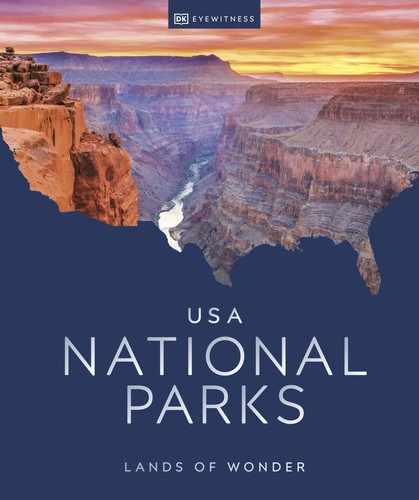AN ENDURING LEGACY
Many of the national parks in the United States preserve land and historic sites once occupied by American Indian tribes, whose legacy is most tangible in the parks of the American West.
Preserving the works of man
The stewardship we celebrate in the present has deep roots in the traditions and people of the past. The earliest inhabitants of the New World existed by hunting animals and cultivating crops, their lives in rhythm with the changing seasons. Though most of these American Indian tribes were displaced or removed by force in the Plains Wars, from the 1850s through the early 1920s, a number of parks and monuments retain the heritage of cultures spanning thousands of years.
A visit to the dwellings of the Ancestral Puebloans at Mesa Verde National Park brings you closer to the people who flourished here centuries before the voyage of Christopher Columbus and the colonization of North America. Established in 1906 under the Antiquities Act by President Theodore Roosevelt, Mesa Verde was the first national park set aside specifically to “preserve the works of man,” as a desire to protect both the natural environment and the cultural legacy of indigenous peoples grew in the national conscience.
In the years that followed, many more American Indian sites were designated monuments and parks under the Antiquities Act. In addition to their natural beauty, areas that include the Grand Canyon, the Petrified Forest, and Zion were also protected for the preservation of artifacts from the Paiute, Shoshone, and Zuni.
The human cost
Tragically, a number of these historic sites saw native people forced from their land and many massacred. Yosemite, Yellowstone, and Grand Teton were a few of the parks created at the expense of American Indian tribes who were forced to relocate to reservations. But there were those who refused to relent or disarm. In 1890, near what is now Badlands National Park, almost 400 Lakota Sioux were killed or injured in an act of military aggression by the US Army. At the site today called Wounded Knee, a national monument stands to remind us of past injustices and to recognize the people whose land we are obligated to preserve.

The more fortunate Lakota Sioux survived the Battle of Wounded Knee
INSPIRING IDEAS
American Indian Culture
There are many ways to experience American Indian culture in the parks.
Ceremonial Dances
Feel the pulse as tribal communities exhibit traditional music, singing, and dancing at the Grand Canyon, Denali, and Mesa Verde.
Petroglyphs and Rock Art
Look for intricate ancient drawings on stone walls at Canyonlands and Arches.
Crafts
Learn a skill at a cultural site, as local artists share their creativity in intricate basket making, beadwork, and pottery.
Explore Dwellings
Crawl through tunnels and scramble up ladders while exploring the incredible cliff dwellings in Mesa Verde National Park.

The Cliff Palace, in Mesa Verde National Park, is the largest cliff dwelling in North America
